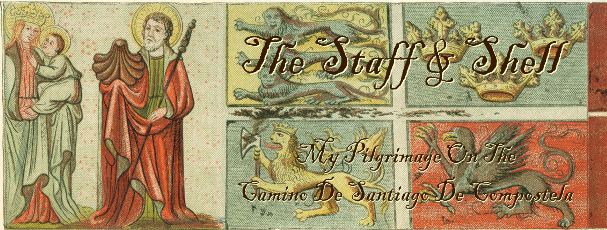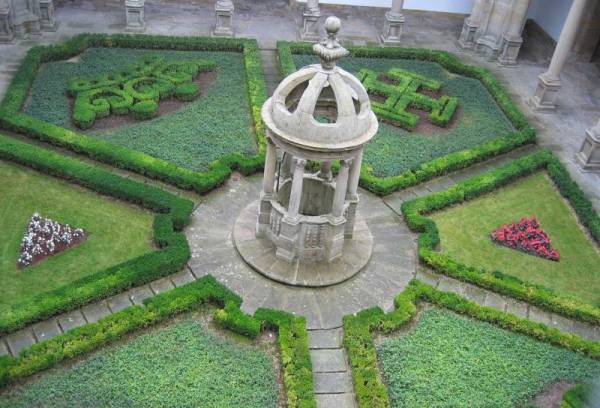MESSAGE OF HIS HOLINESS
1. At the beginning of this New Year, I wish to offer heartfelt greetings of peace to all Christian communities, international leaders, and people of good will throughout the world. For this XLIII World Day of Peace I have chosen the theme: If You Want to Cultivate Peace, Protect Creation. Respect for creation is of immense consequence, not least because “creation is the beginning and the foundation of all God’s works”,[1] and its preservation has now become essential for the pacific coexistence of mankind. Man’s inhumanity to man has given rise to numerous threats to peace and to authentic and integral human development – wars, international and regional conflicts, acts of terrorism, and violations of human rights. Yet no less troubling are the threats arising from the neglect – if not downright misuse – of the earth and the natural goods that God has given us. For this reason, it is imperative that mankind renew and strengthen “that covenant between human beings and the environment, which should mirror the creative love of God, from whom we come and towards whom we are journeying”.[2]
2. In my Encyclical Caritas in Veritate, I noted that integral human development is closely linked to the obligations which flow from man’s relationship with the natural environment. The environment must be seen as God’s gift to all people, and the use we make of it entails a shared responsibility for all humanity, especially the poor and future generations. I also observed that whenever nature, and human beings in particular, are seen merely as products of chance or an evolutionary determinism, our overall sense of responsibility wanes.[3] On the other hand, seeing creation as God’s gift to humanity helps us understand our vocation and worth as human beings. With the Psalmist, we can exclaim with wonder: “When I look at your heavens, the work of your hands, the moon and the stars which you have established; what is man that you are mindful of him, and the son of man that you care for him?” (Ps 8:4-5). Contemplating the beauty of creation inspires us to recognize the love of the Creator, that Love which “moves the sun and the other stars”.[4]
3. Twenty years ago, Pope John Paul II devoted his Message for the World Day of Peace to the theme: Peace with God the Creator, Peace with All of Creation. He emphasized our relationship, as God’s creatures, with the universe all around us. “In our day”, he wrote, “there is a growing awareness that world peace is threatened … also by a lack of due respect for nature”. He added that “ecological awareness, rather than being downplayed, needs to be helped to develop and mature, and find fitting expression in concrete programmes and initiatives”.[5] Previous Popes had spoken of the relationship between human beings and the environment. In 1971, for example, on the eightieth anniversary of Leo XIII’s Encyclical Rerum Novarum, Paul VI pointed out that “by an ill-considered exploitation of nature (man) risks destroying it and becoming in his turn the victim of this degradation”. He added that “not only is the material environment becoming a permanent menace – pollution and refuse, new illnesses and absolute destructive capacity – but the human framework is no longer under man’s control, thus creating an environment for tomorrow which may well be intolerable. This is a wide-ranging social problem which concerns the entire human family”.[6]
4. Without entering into the merit of specific technical solutions, the Church is nonetheless concerned, as an “expert in humanity”, to call attention to the relationship between the Creator, human beings and the created order. In 1990 John Paul II had spoken of an “ecological crisis” and, in highlighting its primarily ethical character, pointed to the “urgent moral need for a new solidarity”.[7] His appeal is all the more pressing today, in the face of signs of a growing crisis which it would be irresponsible not to take seriously. Can we remain indifferent before the problems associated with such realities as climate change, desertification, the deterioration and loss of productivity in vast agricultural areas, the pollution of rivers and aquifers, the loss of biodiversity, the increase of natural catastrophes and the deforestation of equatorial and tropical regions? Can we disregard the growing phenomenon of “environmental refugees”, people who are forced by the degradation of their natural habitat to forsake it – and often their possessions as well – in order to face the dangers and uncertainties of forced displacement? Can we remain impassive in the face of actual and potential conflicts involving access to natural resources? All these are issues with a profound impact on the exercise of human rights, such as the right to life, food, health and development.
5. It should be evident that the ecological crisis cannot be viewed in isolation from other related questions, since it is closely linked to the notion of development itself and our understanding of man in his relationship to others and to the rest of creation. Prudence would thus dictate a profound, long-term review of our model of development, one which would take into consideration the meaning of the economy and its goals with an eye to correcting its malfunctions and misapplications. The ecological health of the planet calls for this, but it is also demanded by the cultural and moral crisis of humanity whose symptoms have for some time been evident in every part of the world.[8] Humanity needs a profound cultural renewal; it needs to rediscover those values which can serve as the solid basis for building a brighter future for all. Our present crises – be they economic, food-related, environmental or social – are ultimately also moral crises, and all of them are interrelated. They require us to rethink the path which we are travelling together. Specifically, they call for a lifestyle marked by sobriety and solidarity, with new rules and forms of engagement, one which focuses confidently and courageously on strategies that actually work, while decisively rejecting those that have failed. Only in this way can the current crisis become an opportunity for discernment and new strategic planning.
6. Is it not true that what we call “nature” in a cosmic sense has its origin in “a plan of love and truth”? The world “is not the product of any necessity whatsoever, nor of blind fate or chance… The world proceeds from the free will of God; he wanted to make his creatures share in his being, in his intelligence, and in his goodness”.[9] The Book of Genesis, in its very first pages, points to the wise design of the cosmos: it comes forth from God’s mind and finds its culmination in man and woman, made in the image and likeness of the Creator to “fill the earth” and to “have dominion over” it as “stewards” of God himself (cf. Gen 1:28). The harmony between the Creator, mankind and the created world, as described by Sacred Scripture, was disrupted by the sin of Adam and Eve, by man and woman, who wanted to take the place of God and refused to acknowledge that they were his creatures. As a result, the work of “exercising dominion” over the earth, “tilling it and keeping it”, was also disrupted, and conflict arose within and between mankind and the rest of creation (cf. Gen 3:17-19). Human beings let themselves be mastered by selfishness; they misunderstood the meaning of God’s command and exploited creation out of a desire to exercise absolute domination over it. But the true meaning of God’s original command, as the Book of Genesis clearly shows, was not a simple conferral of authority, but rather a summons to responsibility. The wisdom of the ancients had recognized that nature is not at our disposal as “a heap of scattered refuse”.[10] Biblical Revelation made us see that nature is a gift of the Creator, who gave it an inbuilt order and enabled man to draw from it the principles needed to “till it and keep it” (cf. Gen. 2:15).[11] Everything that exists belongs to God, who has entrusted it to man, albeit not for his arbitrary use. Once man, instead of acting as God’s co-worker, sets himself up in place of God, he ends up provoking a rebellion on the part of nature, “which is more tyrannized than governed by him”.[12] Man thus has a duty to exercise responsible stewardship over creation, to care for it and to cultivate it.[13]
7. Sad to say, it is all too evident that large numbers of people in different countries and areas of our planet are experiencing increased hardship because of the negligence or refusal of many others to exercise responsible stewardship over the environment. The Second Vatican Ecumenical Council reminded us that “God has destined the earth and everything it contains for all peoples and nations”.[14] The goods of creation belong to humanity as a whole. Yet the current pace of environmental exploitation is seriously endangering the supply of certain natural resources not only for the present generation, but above all for generations yet to come.[15] It is not hard to see that environmental degradation is often due to the lack of far-sighted official policies or to the pursuit of myopic economic interests, which then, tragically, become a serious threat to creation. To combat this phenomenon, economic activity needs to consider the fact that “every economic decision has a moral consequence” [16] and thus show increased respect for the environment. When making use of natural resources, we should be concerned for their protection and consider the cost entailed – environmentally and socially – as an essential part of the overall expenses incurred. The international community and national governments are responsible for sending the right signals in order to combat effectively the misuse of the environment. To protect the environment, and to safeguard natural resources and the climate, there is a need to act in accordance with clearly-defined rules, also from the juridical and economic standpoint, while at the same time taking into due account the solidarity we owe to those living in the poorer areas of our world and to future generations.
8. A greater sense of intergenerational solidarity is urgently needed. Future generations cannot be saddled with the cost of our use of common environmental resources. “We have inherited from past generations, and we have benefited from the work of our contemporaries; for this reason we have obligations towards all, and we cannot refuse to interest ourselves in those who will come after us, to enlarge the human family. Universal solidarity represents a benefit as well as a duty. This is a responsibility that present generations have towards those of the future, a responsibility that also concerns individual States and the international community”.[17] Natural resources should be used in such a way that immediate benefits do not have a negative impact on living creatures, human and not, present and future; that the protection of private property does not conflict with the universal destination of goods;[18] that human activity does not compromise the fruitfulness of the earth, for the benefit of people now and in the future. In addition to a fairer sense of intergenerational solidarity there is also an urgent moral need for a renewed sense of intragenerational solidarity, especially in relationships between developing countries and highly industrialized countries: “the international community has an urgent duty to find institutional means of regulating the exploitation of non-renewable resources, involving poor countries in the process, in order to plan together for the future”.[19] The ecological crisis shows the urgency of a solidarity which embraces time and space. It is important to acknowledge that among the causes of the present ecological crisis is the historical responsibility of the industrialized countries. Yet the less developed countries, and emerging countries in particular, are not exempt from their own responsibilities with regard to creation, for the duty of gradually adopting effective environmental measures and policies is incumbent upon all. This would be accomplished more easily if self-interest played a lesser role in the granting of aid and the sharing of knowledge and cleaner technologies.
9. To be sure, among the basic problems which the international community has to address is that of energy resources and the development of joint and sustainable strategies to satisfy the energy needs of the present and future generations. This means that technologically advanced societies must be prepared to encourage more sober lifestyles, while reducing their energy consumption and improving its efficiency. At the same time there is a need to encourage research into, and utilization of, forms of energy with lower impact on the environment and “a world-wide redistribution of energy resources, so that countries lacking those resources can have access to them”.[20] The ecological crisis offers an historic opportunity to develop a common plan of action aimed at orienting the model of global development towards greater respect for creation and for an integral human development inspired by the values proper to charity in truth. I would advocate the adoption of a model of development based on the centrality of the human person, on the promotion and sharing of the common good, on responsibility, on a realization of our need for a changed life-style, and on prudence, the virtue which tells us what needs to be done today in view of what might happen tomorrow.[21]
10. A sustainable comprehensive management of the environment and the resources of the planet demands that human intelligence be directed to technological and scientific research and its practical applications. The “new solidarity” for which John Paul II called in his Message for the 1990 World Day of Peace [22] and the “global solidarity” for which I myself appealed in my Message for the 2009 World Day of Peace [23] are essential attitudes in shaping our efforts to protect creation through a better internationally-coordinated management of the earth’s resources, particularly today, when there is an increasingly clear link between combatting environmental degradation and promoting an integral human development. These two realities are inseparable, since “the integral development of individuals necessarily entails a joint effort for the development of humanity as a whole”.[24] At present there are a number of scientific developments and innovative approaches which promise to provide satisfactory and balanced solutions to the problem of our relationship to the environment. Encouragement needs to be given, for example, to research into effective ways of exploiting the immense potential of solar energy. Similar attention also needs to be paid to the world-wide problem of water and to the global water cycle system, which is of prime importance for life on earth and whose stability could be seriously jeopardized by climate change. Suitable strategies for rural development centred on small farmers and their families should be explored, as well as the implementation of appropriate policies for the management of forests, for waste disposal and for strengthening the linkage between combatting climate change and overcoming poverty. Ambitious national policies are required, together with a necessary international commitment which will offer important benefits especially in the medium and long term. There is a need, in effect, to move beyond a purely consumerist mentality in order to promote forms of agricultural and industrial production capable of respecting creation and satisfying the primary needs of all. The ecological problem must be dealt with not only because of the chilling prospects of environmental degradation on the horizon; the real motivation must be the quest for authentic world-wide solidarity inspired by the values of charity, justice and the common good. For that matter, as I have stated elsewhere, “technology is never merely technology. It reveals man and his aspirations towards development; it expresses the inner tension that impels him gradually to overcome material limitations. Technology in this sense is a response to God’s command to till and keep the land (cf. Gen 2:15) that he has entrusted to humanity, and it must serve to reinforce the covenant between human beings and the environment, a covenant that should mirror God’s creative love”.[25]
11. It is becoming more and more evident that the issue of environmental degradation challenges us to examine our life-style and the prevailing models of consumption and production, which are often unsustainable from a social, environmental and even economic point of view. We can no longer do without a real change of outlook which will result in new life-styles, “in which the quest for truth, beauty, goodness and communion with others for the sake of common growth are the factors which determine consumer choices, savings and investments”.[26] Education for peace must increasingly begin with far-reaching decisions on the part of individuals, families, communities and states. We are all responsible for the protection and care of the environment. This responsibility knows no boundaries. In accordance with the principle of subsidiarity it is important for everyone to be committed at his or her proper level, working to overcome the prevalence of particular interests. A special role in raising awareness and in formation belongs to the different groups present in civil society and to the non-governmental organizations which work with determination and generosity for the spread of ecological responsibility, responsibility which should be ever more deeply anchored in respect for “human ecology”. The media also have a responsibility in this regard to offer positive and inspiring models. In a word, concern for the environment calls for a broad global vision of the world; a responsible common effort to move beyond approaches based on selfish nationalistic interests towards a vision constantly open to the needs of all peoples. We cannot remain indifferent to what is happening around us, for the deterioration of any one part of the planet affects us all. Relationships between individuals, social groups and states, like those between human beings and the environment, must be marked by respect and “charity in truth”. In this broader context one can only encourage the efforts of the international community to ensure progressive disarmament and a world free of nuclear weapons, whose presence alone threatens the life of the planet and the ongoing integral development of the present generation and of generations yet to come.
12. The Church has a responsibility towards creation, and she considers it her duty to exercise that responsibility in public life, in order to protect earth, water and air as gifts of God the Creator meant for everyone, and above all to save mankind from the danger of self-destruction. The degradation of nature is closely linked to the cultural models shaping human coexistence: consequently, “when ‘human ecology’ is respected within society, environmental ecology also benefits”.[27] Young people cannot be asked to respect the environment if they are not helped, within families and society as a whole, to respect themselves. The book of nature is one and indivisible; it includes not only the environment but also individual, family and social ethics.[28] Our duties towards the environment flow from our duties towards the person, considered both individually and in relation to others.
Hence I readily encourage efforts to promote a greater sense of ecological responsibility which, as I indicated in my Encyclical Caritas in Veritate, would safeguard an authentic “human ecology” and thus forcefully reaffirm the inviolability of human life at every stage and in every condition, the dignity of the person and the unique mission of the family, where one is trained in love of neighbour and respect for nature.[29] There is a need to safeguard the human patrimony of society. This patrimony of values originates in and is part of the natural moral law, which is the foundation of respect for the human person and creation.
13. Nor must we forget the very significant fact that many people experience peace and tranquillity, renewal and reinvigoration, when they come into close contact with the beauty and harmony of nature. There exists a certain reciprocity: as we care for creation, we realize that God, through creation, cares for us. On the other hand, a correct understanding of the relationship between man and the environment will not end by absolutizing nature or by considering it more important than the human person. If the Church’s magisterium expresses grave misgivings about notions of the environment inspired by ecocentrism and biocentrism, it is because such notions eliminate the difference of identity and worth between the human person and other living things. In the name of a supposedly egalitarian vision of the “dignity” of all living creatures, such notions end up abolishing the distinctiveness and superior role of human beings. They also open the way to a new pantheism tinged with neo-paganism, which would see the source of man’s salvation in nature alone, understood in purely naturalistic terms. The Church, for her part, is concerned that the question be approached in a balanced way, with respect for the “grammar” which the Creator has inscribed in his handiwork by giving man the role of a steward and administrator with responsibility over creation, a role which man must certainly not abuse, but also one which he may not abdicate. In the same way, the opposite position, which would absolutize technology and human power, results in a grave assault not only on nature, but also on human dignity itself.[30]
14. If you want to cultivate peace, protect creation. The quest for peace by people of good will surely would become easier if all acknowledge the indivisible relationship between God, human beings and the whole of creation. In the light of divine Revelation and in fidelity to the Church’s Tradition, Christians have their own contribution to make. They contemplate the cosmos and its marvels in light of the creative work of the Father and the redemptive work of Christ, who by his death and resurrection has reconciled with God “all things, whether on earth or in heaven” (Col 1:20). Christ, crucified and risen, has bestowed his Spirit of holiness upon mankind, to guide the course of history in anticipation of that day when, with the glorious return of the Saviour, there will be “new heavens and a new earth” (2 Pet 3:13), in which justice and peace will dwell for ever. Protecting the natural environment in order to build a world of peace is thus a duty incumbent upon each and all. It is an urgent challenge, one to be faced with renewed and concerted commitment; it is also a providential opportunity to hand down to coming generations the prospect of a better future for all. May this be clear to world leaders and to those at every level who are concerned for the future of humanity: the protection of creation and peacemaking are profoundly linked! For this reason, I invite all believers to raise a fervent prayer to God, the all-powerful Creator and the Father of mercies, so that all men and women may take to heart the urgent appeal: If you want to cultivate peace, protect creation.
From the Vatican, 8 December 2009
BENEDICTUS PP. XVI
[1] Catechism of the Catholic Church, 198.
[2] Benedict XVI, Message for the 2008 World Day of Peace, 7.
[3] Cf. No.48.
[4] Dante Alighieri, The Divine Comedy, Paradiso, XXXIII, 145.
[5] Message for the 1990 World Day of Peace, 1.
[6] Apostolic Letter Octogesima Adveniens, 21.
[7] Message for the 1990 World Day of Peace, 10.
[8] Cf. Benedict XVI, Encyclical Letter Caritas in Veritate, 32.
[9] Catechism of the Catholic Church, 295.
[10] Heraclitus of Ephesus (c. 535 – c. 475 B.C.), Fragment 22B124, in H. Diels-W. Kranz, Die Fragmente der Vorsokratiker, Weidmann, Berlin,1952, 6th ed.
[11] Cf. Benedict XVI,Encyclical Letter Caritas in Veritate, 48.
[12] John Paul II, Encyclical Letter Centesimus Annus, 37.
[13] Cf. Benedict XVI, Encyclical Letter Caritas in Veritate, 50.
[14] Pastoral Constitution Gaudium et Spes, 69.
[15] Cf. John Paul II, Encyclical Letter Sollicitudo Rei Socialis, 34.
[16] Benedict XVI, Encyclical Letter Caritas in Veritate, 37.
[17] Pontifical Council for Justice and Peace, Compendium of the Social Doctrine of the Church, 467; cf. Paul VI, Encyclical Letter Populorum Progressio, 17.
[18] Cf. John Paul II, Encyclical Letter Centesimus Annus, 30-31, 43
[19] Benedict XVI, Encyclical Letter Caritas in Veritate, 49.
[20] Ibid.
[21] Cf. Saint Thomas Aquinas, S. Th., II-II, q. 49, 5.
[22] Cf. No. 9.
[23] Cf. No. 8.
[24] Paul VI, Encyclical Letter Populorum Progressio, 43.
[25] Encyclical Letter Caritas in Veritate, 69.
[26] John Paul II, Encyclical Letter Centesimus Annus, 36.
[27] Benedict XVI, Encyclical Letter Caritas in Veritate, 51.
[28] Cf. ibid., 15, 51.
[29] Cf. ibid., 28, 51, 61; John Paul II, Encyclical Letter Centesimus Annus, 38, 39.
[30] Cf. Benedict XVI, Encyclical Letter Caritas in Veritate, 70.






































